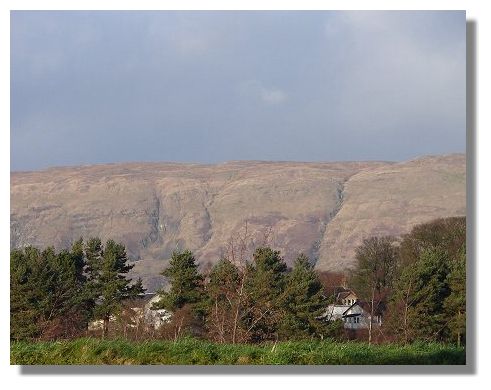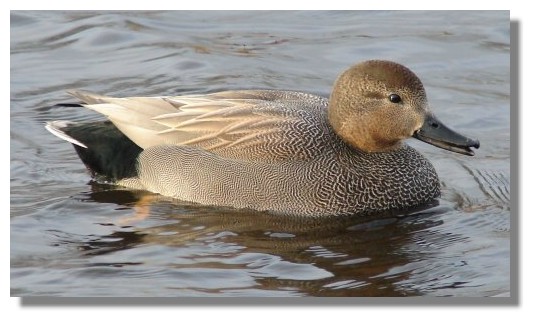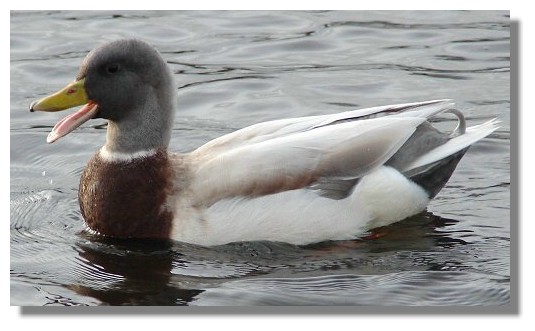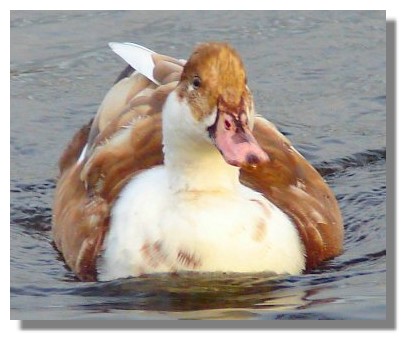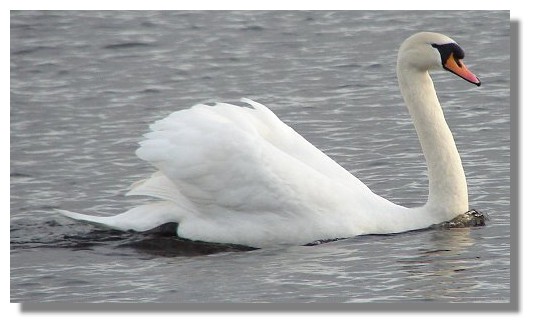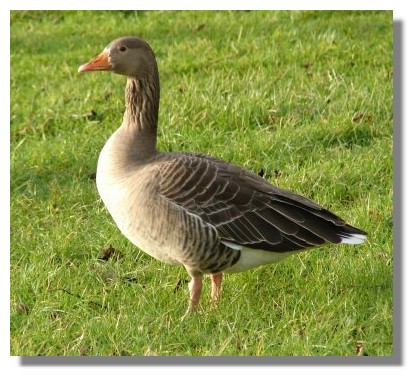Each week the Scottish Snippets Newsletter includes a number of photographs which illustrate the weather, flora and fauna of the current week around Scotland. There are so many such graphics worth including that a separate "colour supplement" is created so as not to totally overload the Newsletter. Here is this week's crop!
A picture showing a typical weather scene this week should really be of a dull, overcast sky with no sunshine. However, this picture of the Campsie Fells, taken on Friday, was taken when some sunshine was falling on the hills, but with a leaden sky behind.
There has been a solitary Gadwall over-wintering at Drumpellier Country Park (as it did last year). It is smaller than the abundant Mallards, and more timid than they are. So it tends to hang back when there is bread being thrown - I have to make a special effort to reach it! When the wind is blowing in the wrong direction, that can be difficult...
Although this handsome bird has many of the characteristics of a Mallard, its colours are not those of the majority of this species. But the bird guides say that the mallard has been domesticated for centuries, being bred for shooting parties on country estates. During that time many different colours have been created by landowners. The grey head, instead of the usual iridescent green, is particularly attractive.
In the canine world, this bird would probably be classed as a "mongrel" as it is a mixture of at least two different breeds. There is a bit of a Mallard in it but it is larger than that species and the colouring is very different. It does seem to have a wild look about it - but that was probably due more desperation to be first in the queue for the bread!
This swan - in full threat pose - was chasing off another swan. Last week I was commenting that it would not be long before the swans would start their courtship dances. This week, that was exactly what some of the mature swans were doing - rubbing necks together, dipping into the water and circling round each other. And, of course, chasing off rivals.
Greylag geese are often seen in flocks flying in formation (though more often as a disorganised rabble, honking furiously, but with the leader out in front) or in the water. But they do browse on grass and young shoots (much to the annoyance of many farmers as hundreds of birds land on crops that they have sown). While many of the birds busy themselves doing that, there always seems to be one or two standing upright, on guard - such as this alert bird.
If you want to look back at earlier editions of this Colour Supplement, there is an Index Page
